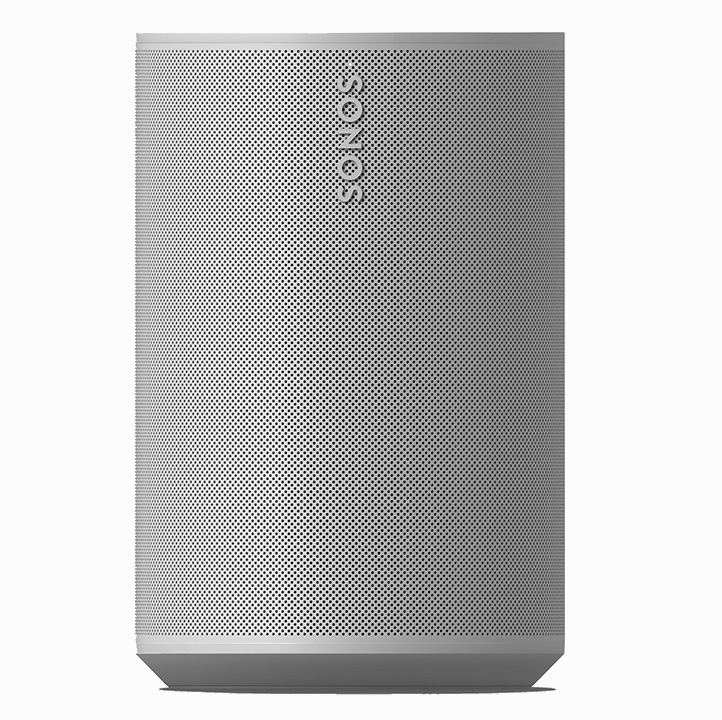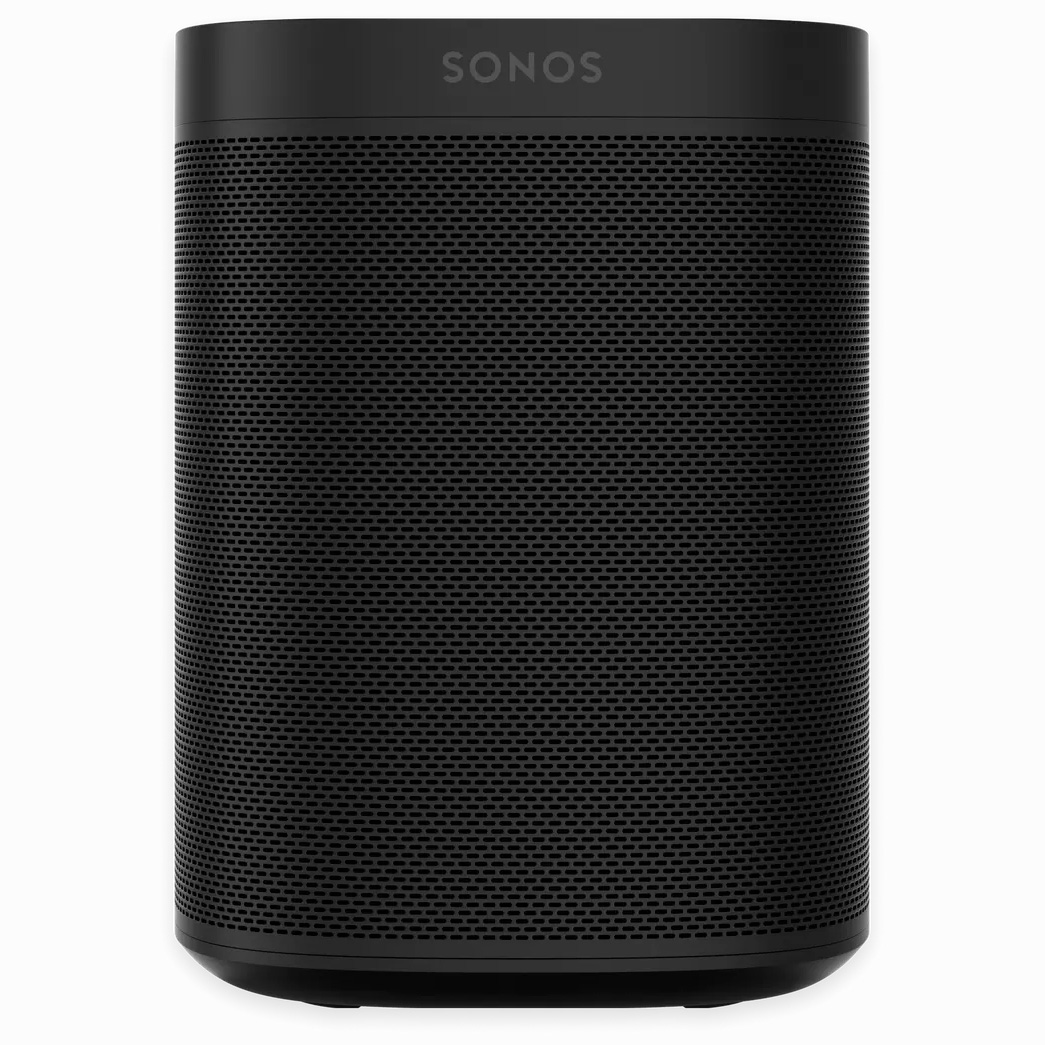Sonos Era 100 vs. Sonos One
Sonos has a new smart speaker; should you upgrade?
Six years after Sonos launched the Sonos One, its introductory smart speaker, the company is introducing its successor, the Sonos Era 100. This new speaker doesn't look all too dissimilar to its predecessor, but boasts a number of improvements, including a second tweeter, Wi-Fi 6, and, finally, Bluetooth.
Sonos is planning to phase out both the Sonos One and the Sonos One SL, but will continue to sell both models while supplies last.
In this Sonos Era 100 vs. Sonos One comparison, we'll take a look at both speakers side by side to see where the company has made improvements, and to see if it's worth the upgrade for you.

The Sonos Era 100 has two tweeters and a 25 percent larger woofer than the Sonos One; it also has Wi-Fi 6, Bluetooth, and can be connected directly to a turntable via an adapter (sold separately). However, it's more expensive and does not work with Google Assistant.
For
- Dual tweeters
- Larger woofer
- Wi-Fi 6, Bluetooth
Against
- More expensive
- Doesn't support Google Assistant

The Sonos One, which has been available since 2017, still produces excellent audio, but only has one tweeter, and lacks a line-in port. However, it has a built-in Ethernet port, and works with Google Assistant as well as Alexa.
For
- Supports Google Assistant
- Less expensive
- Dedicated Ethernet port
Against
- Only one tweeter
- Older Wi-Fi/no Bluetooth
- No line-in
Sonos Era 100 vs. Sonos One: Price and availability
The Sonos Era 100 will cost $249 (£249/€279/AUD $399) when it goes on sale on March 28. Preorders start today (March 7).
Currently, the Sonos One is $219, while the Sonos One SL (which doesn't have smart speaker capabilities) is $199. As mentioned in the intro, the Sonos One and the Sonos One SL will remain on sale while supplies last, but are being phased out.
Both the Sonos Era 100 and the Sonos One are available in black and white.
| Header Cell - Column 0 | Sonos Era 100 | Sonos One |
|---|---|---|
| Price | $249 | $219 |
| Speakers | 2x tweeters, 1x woofer | 1x tweeter, 1x woofer |
| Ports | USB-C | Ethernet |
| Smart assistants | Alexa, Sonos | Alexa, Sonos |
| Wireless | 802.11a/b/g/n/ac/ax (2.4 GHz/5 GHz), Bluetooth 5.0, AirPlay 2 | 802.11a/b/g/n (2.4/5 GHz), AirPlay 2 |
| Size | 7.2 x 4.7 x 5.1 inches | 6.4 x 4.7 x 4.7 inches |
Sonos Era 100 vs. Sonos One: Design
Size-wise, the Era 100 is a bit larger than the Sonos One, but not by much. The Era 100 is a little less than an inch taller and about half an inch deeper than the One, so there's not a huge difference in the footprint. However, the Era 100 has more of a rounded design than the Sonos One, and its mesh grille extends further vertically.
The Era 100's controls are also slightly modified compared to the Sonos One. The biggest change is that the Era now has a small groove running through the middle, which lets you slide your finger to increase or decrease the volume. You can also tap on either side to achieve the same effect. Towards the front of the top of the Era 100 are buttons for play/pause, reverse, and forward. On the Sonos One, the latter two actions were combined with the volume controls; having them separated on the Era 100 makes things less confusing.
Instead of an Ethernet port as found on the Sonos One, the Era 100 has a USB-C port on the back. Sonos will sell adapters that can provide an Ethernet connection, as well as a line-in adapter, so you can connect the Sonos Era 100 directly to a turntable. That could make the Era 100 a good alternative if you don't want to purchase something like the Sonos Amp.
A Combo Adapter ($39.99) will let you connect both Ethernet and a 3.5mm audio source, while the Line-In Adapter ($19.99) is for audio only.
Sonos Era 100 vs. Sonos One: Audio capabilities
Inside the biggest change between the Sonos One and the Sonos Era 100 is that the latter now has two tweeters, versus just one in the One. Additionally, the Era 100's woofer is 25 percent larger than that in the Sonos One, which should result in greater bass response.
And, because the Era 100 has two tweeters, that also means that you can get stereo sound from a single speaker, rather than needing to purchase two. (You can still pair two Era 100s together to create a more immersive soundscape, and they can also be used as rear speakers if you have a Sonos Arc, Sonos Beam, or Sonos Ray soundbar.)
With the Sonos Era 100, Android phone owners will now be able to get a benefit iPhone owners have enjoyed for years, as Sonos is adding automatic Trueplay to the new speaker. This feature, which was introduced in the Sonos Move (and similar to what's in the Apple HomePod 2), uses the speaker's microphone to listen for audio reflections, and automatically adjusts the output of the speakers to account for that room's acoustics. In the Sonos One, Trueplay was limited to iPhone users.
It should be noted that advanced Trueplay — in which you move your iPhone around a room while the speaker plays an assortment of tones — will still be available for the Sonos Era 100, and is still iPhone-only.
Sonos Era 100 vs. Sonos One: Connectivity and smart home features
It's been a long time coming: The Sonos Era 100 has Bluetooth, so either the technology has advanced to the point where Sonos is comfortable streaming audio via this connection, or that consumer demand is such that the company can't exclude it anymore. Either way, it will make it a lot easier to stream music wirelessly to the Sonos Era 100 than the Sonos One.
The Era 100's Wi-Fi has also been improved; it has a Wi-Fi 6 antenna, so you can get even better throughput when connected to a Wi-Fi 6 router. The Sonos One has 802.11n connectivity, which works fine, but is several generations old at this point.
One area where the Sonos One has the Era 100 beat is with voice assistants. The Sonos One will work with both Alexa and Google Assistant, but at launch, the Era 100 will only work with Alexa. It's most likely the result of ongoing litigation between Sonos and Google over smart speakers and voice control technology. So, if you want a smart speaker to control your Google Home smart home devices, the Sonos One is the better option.
Both speakers also have Sonos' own voice assistant, but it's limited to controlling your music playback.
Sonos Era 100 vs. Sonos One: Should you upgrade?
We're going to need to listen to the Sonos One next to the Sonos Era 100 before we can definitively tell you how much the audio has improved from one generation to the next. In our Sonos Era 100 hands-on, we were definitely impressed with its performance. (You'll also want to check out of Sonos Era 300 hands-on if you're looking for a speaker with spatial audio.)
If you currently own a Sonos One, there's probably no need to upgrade to the Era 100; why get rid of one of the best smart speakers if it's still working?
Sonos does have an upgrade program, which as of Monday, March 6, was offering 15% off a new device if you trade in a Sonos One or a Sonos Play:1, so that would bring the cost of the Sonos Era 100 to about the same price as the Sonos One.
However, if you want to connect a turntable to your smart speaker, or if you own an Android phone, but want audio better tailored to your room, the Sonos Era 100 could be worth the investment.
More from Tom's Guide
- The best smart speakers to buy right now
- Discover how Sonos works and the best Sonos speakers you can buy right now.
- This Sonos Amp is the best part of my audio setup
- 5 ways to make your Sonos speaker sound even better
Sign up to get the BEST of Tom's Guide direct to your inbox.
Get instant access to breaking news, the hottest reviews, great deals and helpful tips.

Michael A. Prospero is the U.S. Editor-in-Chief for Tom’s Guide. He oversees all evergreen content and oversees the Homes, Smart Home, and Fitness/Wearables categories for the site. In his spare time, he also tests out the latest drones, electric scooters, and smart home gadgets, such as video doorbells. Before his tenure at Tom's Guide, he was the Reviews Editor for Laptop Magazine, a reporter at Fast Company, the Times of Trenton, and, many eons back, an intern at George magazine. He received his undergraduate degree from Boston College, where he worked on the campus newspaper The Heights, and then attended the Columbia University school of Journalism. When he’s not testing out the latest running watch, electric scooter, or skiing or training for a marathon, he’s probably using the latest sous vide machine, smoker, or pizza oven, to the delight — or chagrin — of his family.
